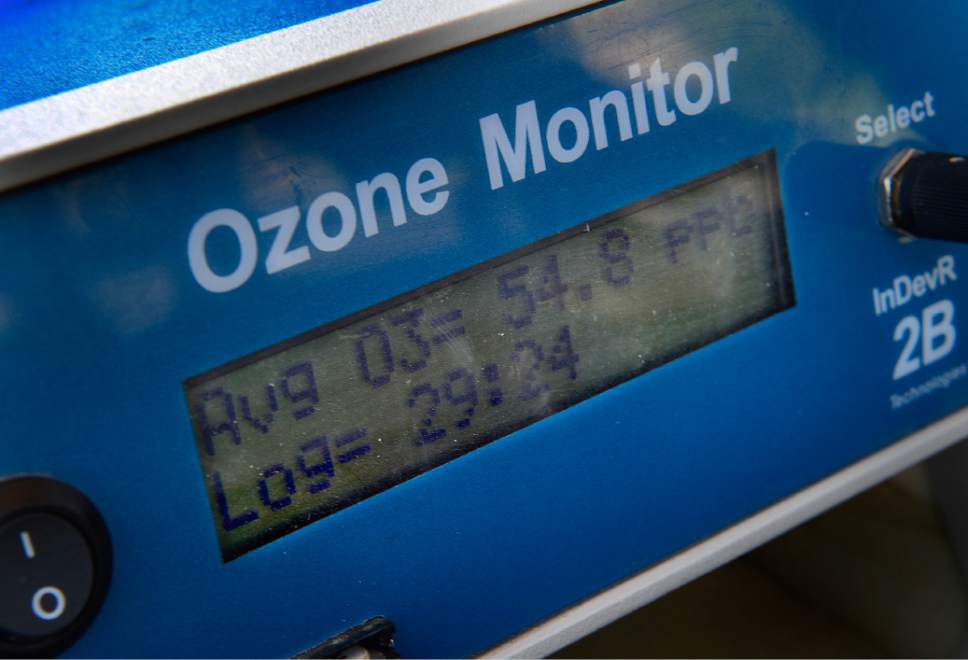This is an archived article that was published on sltrib.com in 2017, and information in the article may be outdated. It is provided only for personal research purposes and may not be reprinted.
Federal regulators have decided to give Utah — and other areas on track to violate the 2015 standard for ozone pollution — an extra year to address the problem.
The Environmental Protection Agency announced Tuesday evening that it would extend the deadline for determining which areas did not meet the new requirement.
According to the agency's news release, the delay is intended to give states more time to develop air quality plans while giving the EPA additional time to review the 2015 standard.
"The agency is taking time to better understand some lingering, complicated issues so that air attainment decisions can be based on the latest and greatest information," according to the release.
The release also indicated that EPA Administrator Scott Pruitt would like to provide states "greater flexibility" in addressing ozone pollution.
Ozone is a secondary pollutant that forms in the atmosphere when certain chemicals emitted by cars, household products and other sources react with sunlight. Exposure to elevated concentrations of the pollutant can cause permanent lung damage, especially in young children.
Areas that could not meet the EPA's 2015 standard that limited ozone concentrations to 70 parts per billion would have been deemed nonattainment areas this coming October. Nonattainment areas are required by federal law to produce plans to monitor and reduce a specific pollutant.
Six Utah counties stood to receive a nonattainment designation in October: Salt Lake, Davis, Weber, Utah, Duchesne and Uintah.
Putting off the decision on nonattainment until October 2018 will likely have little impact on those areas, said Bryce Bird, director of the Utah Division of Air Quality. Based on current monitoring and projected trends, he said he did not expect those areas to meet the standard before the new deadline.
Furthermore, Bird said, Utah is already required to adopt new pollution controls, a consequence of the Wasatch Front's failure to meet deadlines for reducing small particulate pollution. Those controls will also help reduce ozone pollution, he said.
However, the extended deadline for designating nonattainment areas will also push back the deadline for compliance. Utah's nonattainment areas would have had three years after their designation to reach the new standard before further air pollution controls were mandated by the EPA.
News of the delay came Wednesday as the state Air Quality Board is reviewing more than a dozen rules on emissions from specific "area sources," in this case, primarily light-industrial operations such as commercial painting and coating, printing and manufacturing. The rules apply to pollutants known as volatile organize compounds, which contribute to the formation of both ozone and small particulate pollution in Utah.
Bird said the state is also reviewing regulations for residential furnaces and boilers, restaurants and for oil and gas facilities, with rules on the later to be proposed later this year.
While intended to address small particulate pollution as now required by the EPA, these rules also stand to reduce ozone pollution, Bird said.
Although the state's computer models are incomplete, Bird said current projections suggest Utah would have failed to comply with the ozone standard in 2020. However, he said there is a better chance now that Utah will attain the standard by 2021 without issuing new ozone-specific regulations.
"It's unlikely that one year would make a difference on our projected designation status or the recommendation we would make with respect to that status," Bird said. "But we could meet the standard in four years, rather than three."
But Matt Pacenza, executive director of the Salt Lake City-based environmental advocacy group HEAL Utah, called the delay "a blow, at least for the short-term, to public health in Utah."
A nonattainment designation could push Utah to implement more pollution controls, he said. But because it's only a 12-month delay, Pacenza said he saw the EPA's decision as a procedural issue, "rather than a fundamental change in things."
He was more concerned about the possible weakening of the standard, which he said was already a compromise opposed by public health and environmental groups. They wanted the old standard of 75 parts per billion deceased even further.
Denni Cawley, executive director of Utah Physicians for a Healthy Environment, voiced similar sentiments, but expressed concern about the impact any delay, even a year, would have on children. New research, she said, indicates even low levels of ozone could harm vulnerable populations.
Utah Physicians, along with the national Center for Biological Diversity, has filed a request with the EPA for more detail on the reasoning behind the agency's delay.
"We will be looking into this," Cawley said. "We are trying to process the best way to make sure that this rule doesn't change, and make sure the states are still held accountable for meeting the standards."
Twitter: @emapen





